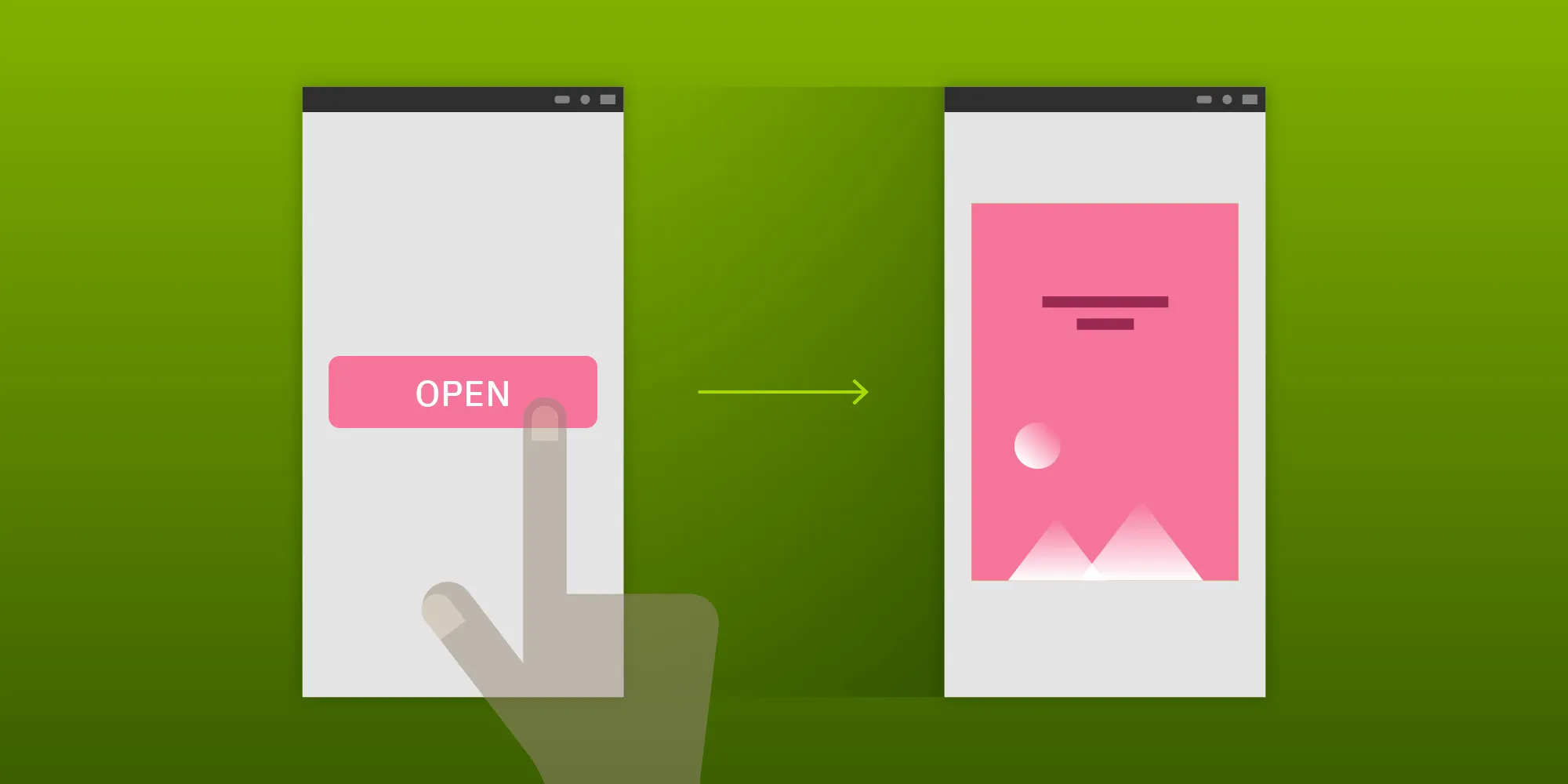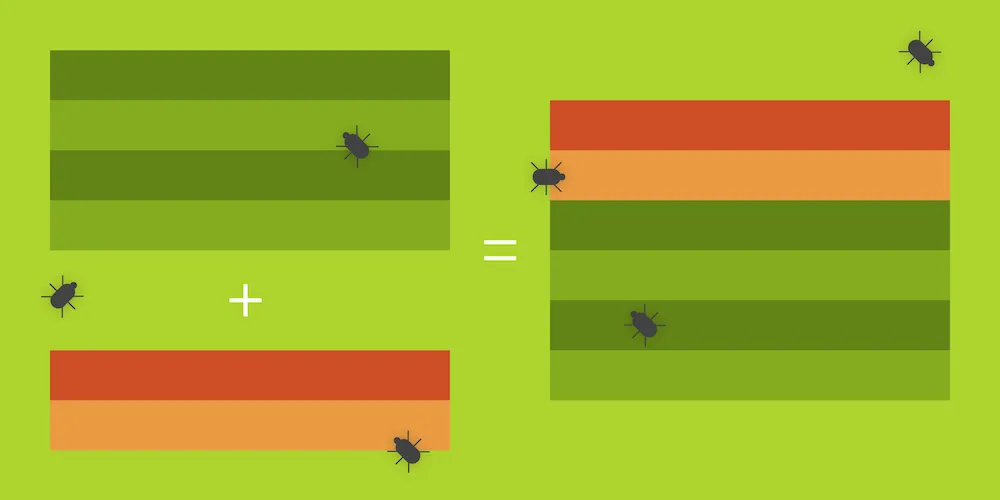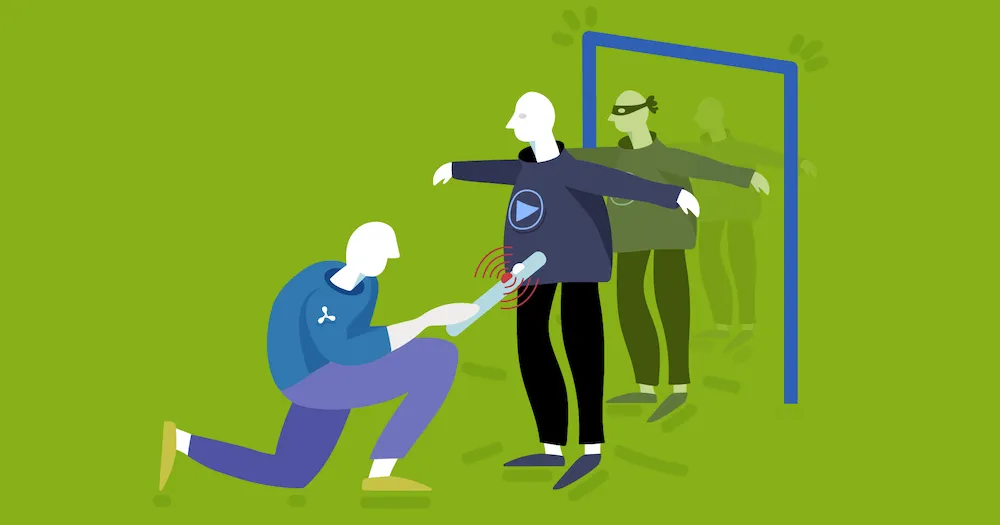Restoring State in Android MVP Architecture
Table of contents
State restoration in an Android app developed with the MVP (Model-View-Presenter) pattern can sometimes get tricky if you want to keep the architecture clean. One such example would be when a presenter needs to be made aware of the state. Android already has a mechanism for storing and receiving objects from the Bundle(opens in a new tab), which can be used to restore state. The presenter, on the other hand, shouldn’t depend on any Android classes. This enables better abstraction and testability with pure Java unit tests.
If you search around, you’ll find various approaches to restoring state in MVP architecture, but either they don’t use the default Android state restoration mechanism, they keep the presenter dependent of the platform, or they’re just ugly workarounds:
- Providing
Bundleto the presenter(opens in a new tab) - Storing presenters in a singleton map(opens in a new tab)
- Having an entire activity lifecycle passed to the presenter(opens in a new tab)
- Preserving presenters in loaders(opens in a new tab)
The Initial Structure
This article tries to solve the problem of state restoration in MVP architecture by introducing presenters that can have a state — otherwise referred to as stateful presenters. These presenters can optionally receive the state from the View. Additionally, they expose the state getter method so that the View can retrieve the state from the presenter at any point.
On Android, the view will usually be an Activity(opens in a new tab), a Fragment(opens in a new tab), or a custom view, all of which have a built-in mechanism for restoring state. We’ll use that mechanism to restore the state retrieved from the presenter. The state itself will be an implementation of the BaseState interface added to the already existing BaseModel, BaseView, and BasePresenter.
State implementations are also independent of the Android platform. Due to this independence, we can mock states and run pure Java unit tests with a mocked state restoration process without having to include the Android framework at all (assuming Android state restoration works correctly).
Let’s get to some code. This is the usual structure seen in apps using the MVP architecture (nomenclature can vary, but the principle is similar or the same):
interface BaseView {}
// BaseModel.ktinterface BaseModel {}
// BasePresenter.ktinterface BasePresenter<in V: BaseView> { fun subscribe(view: V) fun unsubscribe()}interface BaseView {}
// BaseModel.javainterface BaseModel {}
// BasePresenter.javainterface BasePresenter<V extends BaseView> { void subscribe(@NonNull V view); void unsubscribe();}To this structure, we add state representation and a presenter that can both receive and provide the state:
interface BaseState {}
// BaseStatefulPresenter.ktinterface BaseStatefulPresenter<in V: BaseView, S: BaseState>: BasePresenter<V> { fun subscribe(view: V, state: S?) fun getState(): S}interface BaseState {}
// BaseStatefulPresenter.javainterface BaseStatefulPresenter<V extends BaseView, S extends BaseState> extends BasePresenter<V> { void subscribe(@NonNull V view, @Nullable S state); @NonNull S getState();}An Example
Now let’s see a real-world example. Say we have a TabLayout displaying tabs and we want to restore them when the view (the activity in this case) is restored. Also, we want to restore the last selected tab position.
(Note: Usually we wouldn’t restore a couple of tab items, but let’s go with it for the purpose of this example.)
Setup
First, we can declare a simple contract for tab handling:
interface TabsContract { interface View: BaseView { fun setTabItems(items: List<TabItem>) fun setTabPosition(position: Int) }
interface State: BaseState { fun getLastTabItems(): List<TabItem>? fun getLastTabPosition(): Int? }
interface Model: BaseModel { fun getTabItems(): List<TabItem> }
interface Presenter: BaseStatefulPresenter<View, State> { fun onTabPositionChange(position: Int) }}interface TabsContract { interface View extends BaseView { void setTabItems(List<TabItem> items); void setTabPosition(int position); }
interface State extends BaseState { List<TabItem> getLastTabItems(); int getLastTabPosition(); }
interface Model extends BaseModel { List<TabItem> provideTabItems(); }
interface Presenter extends BaseStatefulPresenter<View, State> { void onTabPositionChange(int position); }}State
In this example, we want to restore the tab items and position of the last selected tab, so that’s how we construct the TabState. Also, immutability is preferred:
class TabsState(private val tabItems: List<TabItem>?, private val tabPosition: Int?): TabsContract.State { override fun getTabItems() = tabItems override fun getTabPosition() = tabPosition}class TabsState implements TabsContract.State { private final List<TabItem> tabItems; private final int tabPosition;
public TabsState(List<TabItem> tabItems, int tabPosition) { this.tabItems = tabItems; this.tabPosition = tabPosition; }
@Override public List<TabItem> getTabItems() { return tabItems; }
@Override public int getTabPosition() { return tabPosition; }}Stateful Presenter
A stateful presenter can receive the state from the view when it subscribes. In this example, we check if items are provided by the state. If not, we’ll load them from the model. Also, if there’s a last saved position, we’ll set it on the view as well. Unrelated code (including dependency injection) is omitted for brevity:
class TabPresenter: TabsContract.Presenter { private var view: TabsContract.View? = null private val model = TabsContract.Model()
private var tabItems: List<TabItem>? = null private var tabPosition: Int? = null
// Subscribe without the state. override fun subscribe(view: TabsContract.View) = subscribe(view, null)
// Subscribe with the provided state. override fun subscribe(view: TabsContract.View, state: TabsContract.State?) { this.view = view
// If there are no retrieved items, get them from the model. tabItems = state?.getLastTabItems() ?: model.getTabItems()
// Set items on the view. this.view?.setTabItems(tabItems!!)
// If there's a last saved position, set it on the view as well, set to 0 by default. val retrievedLastPosition = state?.getLastPosition() if (retrievedLastPosition != null) { this.view?.setTabPosition(retrievedLastPosition) } }
// Once the state is requested, generate a new immutable state instance. override fun getState(): TabsContract.State = TabsState(tabItems, tabPosition)
// Unsubscribe the view from the presenter. override fun unsubscribe() { view = null
// Clear state variables when unsubscribed. The view is no longer associated with this // presenter, so the presenter shouldn't keep the track of the state. tabItems = null tabPosition = null }
// Called by the view when the tab position changes. override fun onTabPositionChange(position: Int) { tabPosition = position
// For example, update the toolbar title once the selected tab changes. val titleRes = tabItems?.get(position)?.title if (titleRes != null) { view?.setToolbarTitle(titleRes) } }}class TabPresenter implements TabsContract.Presenter { @Nullable private TabsContract.View view; private TabsContract.Model model = new TabsContract.Model();
@Nullable private List<TabItem> tabItems; private int lastPosition;
// Subscribe without the state. @Override void subscribe(@NonNull TabsContract.View view) { subscribe(view, null); }
// Subscribe with the provided state. @Override void subscribe(@NonNull TabsContract.View view, @Nullable TabsContract.State state) { this.view = view;
// If there are no retrieved items, get them from the model. If there's no // previously selected position, use 0 as a default one. final int retrievedPosition; if (state != null) { tabItems = state.getLastTabItems(); retrievedPosition = state.getLastTabPosition(); } else { tabItems = model.getTabItems(); retrievedPosition = 0; }
// Set the values on the view. view.setTabItems(tabItems); view.setTabPosition(retrievedPosition); }
// Once the state is requested, generate a new immutable state instance. @Override TabsContract.State getState() { return new TabsState(tabItems, tabPosition); }
// Unsubscribe the view from the presenter. @Override void unsubscribe() { view = null;
// Clear state variables when unsubscribed. The view is no longer associated with this // presenter, so the presenter shouldn't keep the track of the state. tabItems = null; tabPosition = null; }
// Called by the view when the tab position changes. @Override void onTabPositionChange(int position) { tabPosition = position;
// For example, update the toolbar title once the selected tab changes. if (tabItems != null && tabItems.get(position) != null) { view.setToolbarTitle(tabItems.get(position).getTitle()); } }}View Implementation
In our View, which will be an Activity(opens in a new tab) in our example, we handle presenter interactions within three activity lifecycle methods, called in this order:
onPostCreate()(opens in a new tab)onSaveInstanceState()(opens in a new tab)onStop()(opens in a new tab)
The usual practice with a stateless subscriber is to subscribe to the presenter in onResume()(opens in a new tab) and unsubscribe from it in onPause()(opens in a new tab). This can be problematic with the stateful presenter because onSaveInstanceState()(opens in a new tab) isn’t necessarily called before onPause()(opens in a new tab) is, and unsubscribing before retrieving the state there is a bit unintuitive.
We can create an easy workaround by getting the state reference in onPause()(opens in a new tab) and then checking in onSaveInstanceState()(opens in a new tab) to see whether or not it was previously stored.
A cleaner solution is to subscribe to the presenter in onPostCreate()(opens in a new tab) and unsubscribe in onStop()(opens in a new tab), which is always called after onSaveInstanceState()(opens in a new tab). Notice that onSaveInstanceState()(opens in a new tab) might not be called at all if no state needs to be saved — like when navigating back in the app.
Note that onPostCreate()(opens in a new tab) receives the same bundle as onRestoreInstanceState()(opens in a new tab), which was called before it. The bundle is null if there was no previously saved state. That’s very handy for our use case.
Here’s an example of the view implementation:
class TabView : AppCompatActivity(), TabsContract.View, ViewPager.OnPageChangeListener {
// ...
override fun onPostCreate(savedInstanceState: Bundle?) { super.onPostCreate(savedInstanceState)
// Pass state when subscribing; it can be null. presenter.subscribe(this, if (savedInstanceState != null) readFromBundle(savedInstanceState) else null) }
override fun onSaveInstanceState(outState: Bundle?) { super.onSaveInstanceState(outState)
// When saving state, retrieve it from the presenter and save to Bundle. writeToBundle(outState, presenter.getState()) }
override fun onStop() { super.onStop()
// Unsubscribe from the presenter once the activity is stopped. presenter.unsubscribe() }
override fun setTabItems(items: List<TabItem>) { tabPagerAdapter.setTabItems(items) }
override fun setTabPosition(position: Int) { tabLayout.setScrollPosition(position, 0f, true) tabPager.currentItem = position }
// Tab listener notifying the presenter of the change. override fun onPageSelected(position: Int) { presenter.onTabPositionChange(position) }}class TabView extends AppCompatActivity() implements TabsContract.View, ViewPager.OnPageChangeListener {
// ...
@Override public void onPostCreate(Bundle savedInstanceState) { super.onPostCreate();
// Pass state when subscribing; it can be null. presenter.subscribe(this, savedInstanceState != null ? readFromBundle(savedInstanceState) : null); }
@Override public void onSaveInstanceState(Bundle outState) { super.onSaveInstanceState(outState);
// When saving state, retrieve it from the presenter and save to Bundle. writeToBundle(outState, presenter.getState()); }
@Override public void onStop() { super.onStop();
// Unsubscribe from the presenter once the activity is stopped. presenter.unsubscribe(); }
@Override public void setTabItems(List<TabItem> items) { tabPagerAdapter.setTabItems(items); }
@Override public void setTabPosition(int position) { tabLayout.setScrollPosition(position, 0f, true); tabPager.setCurrentItem(position); }
// Tab listener notifying the presenter of the change. @Override public void onPageSelected(int position) { presenter.onTabPositionChange(position); }}The methods writeToBundle() and readToBundle() are just helper methods for writing State to the bundle, and they are used to avoid code clutter (this implementation is omitted since it’s trivial).
You could also make state implement Parcelable(opens in a new tab), but then you would be dependent on the Android platform, which is not what you want in this case.
Conclusion
The architecture presented in this article tries to incorporate the Android state restoration problem into the MVP model while keeping the components independent of the platform. This approach doesn’t force the state on the presenter (you still have the old BasePresenter for stateless implementation), but rather provides presenters that need to manage the state. Stateful presenters are aware of their state through the provided interface without knowing anything about the underlying implementation. By following this pattern, you’ll keep your MVP architecture as it should be by definition, and you’ll get state restoration at the cost of few extra lines of code.







